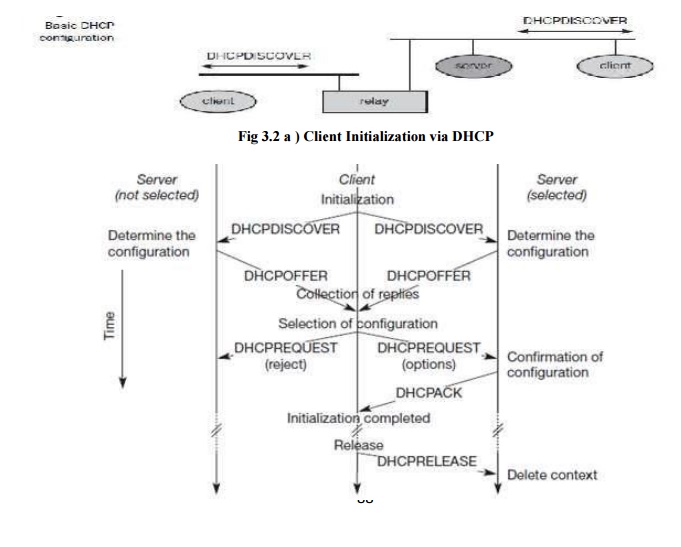Chapter: Mobile Networks : Routing
Dynamic Host Configuration Protocol
DYNAMIC HOST CONFIGURATION
PROTOCOL
The
dynamic host configuration protocol is mainly used to simplify the installation
and maintenance of networked computers. If a new computer is connected to a
network, DHCP can provide it with all the necessary information for full system
integration into the network, e.g., addresses of a DNS server and the default
router, the subnet mask, the domain name, and an IP address. Providing an IP
address makes DHCP very attractive for mobile IP as a source of
care-of-addresses. While the basic DHCP mechanisms are quite simple, many
options are available as described in RFC 2132. DHCP is based on a
client/server model as shown in Figure 8.17. DHCP clients send a request to a
server (DHCPDISCOVER in the example) to which the server responds.

A typical
initialization of a DHCP client is shown in the above Figure. The figure shows
one client and two servers. As described above, the client broadcasts a
DHCPDISCOVER into the subnet. There might be a relay to forward this broadcast.
In the case shown, two servers receive this broadcast and determine the
configuration they can offer to the client. One example for this could be the
checking of available IP addresses and choosing one for the client. Servers
reply to the client‘s request with DHCPOFFER and offer a list of configuration
parameters. The client can now choose one of the configurations offered. The client
in turn replies to the servers, accepting one of the configurations and
rejecting the others using DHCPREQUEST. If a server receives a DHCPREQUEST with
a rejection, it can free the reserved configuration for otherpossible clients.
The server with the configuration accepted by the client now confirms the
configuration with DHCPACK.
This
completes the initialization phase. If a client leaves a subnet, it should
release the configuration received by the server using DHCPRELEASE. Now the
server can free the context stored for the client and offer the configuration
again. The configuration a client gets from a server is only leased for a
certain amount of time; it has to be reconfirmed from time to time. Otherwise
the server will free the configuration. This timeout of configuration helps in
the case of crashed nodes or nodes moved away without releasing the context.
DHCP is a good candidate for supporting the acquisition of care-of addresses
for mobile nodes. The same holds for all other parameters needed, such as
addresses of the default router, DNS servers, the timeserver etc. A DHCP server
should be located in the subnet of the access point of the mobile node, or at
least a DHCP relay should provide forwarding of the messages. RFC 3118
specifies authentication for DHCP messages which is needed to protect mobile
nodes from malicious DHCP servers. Without authentication, the mobile node
cannot trust a DHCP server, and the DHCP server cannot trust the mobile node.
Related Topics